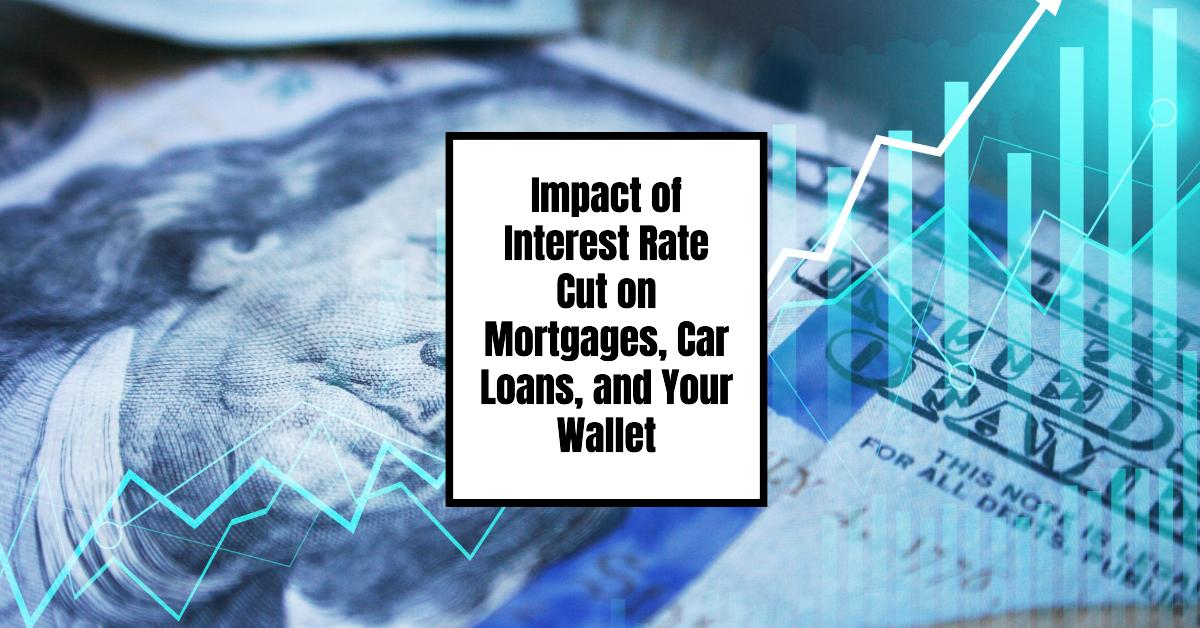The recent decision by the Federal Reserve to implement its first interest rate cut in four years carries significant weight, especially for consumers interested in loans, whether they are for homes, vehicles, or other major purchases.
Impact of Interest Rate Cut on Mortgages, Car Loans, and Your Wallet
Key Takeaways
- Lower Monthly Payments: Expect to see drops in monthly payments for mortgages and other loans.
- Stimulus for Homebuyers: Greater affordability can attract first-time homebuyers and revitalize the housing market.
- Increased Borrowing: Consumers may be encouraged to take on more debt due to lower interest rates.
- Impact on Savings: Interest rates on savings accounts are also likely to drop, affecting how much you earn on your deposits.
Understanding the Fed's Interest Rate Cut
When the Fed lowers interest rates, it has a cascading effect on the economy. This decision makes borrowing less expensive, which can have profound impacts on various types of loans:
Impact on Mortgages
One of the most significant impacts of a Fed interest rate cut is seen in the housing market. Mortgage rates are directly influenced by changes in the federal funds rate.
- Lower Rates for Homebuyers: A drop in mortgage rates makes it cheaper for first-time homebuyers to enter the market. For example, if a borrower previously faced a 7% interest rate, a cut to 5.5% could mean savings of hundreds of dollars a month. This drop not only makes homes more accessible but may also invigorate the housing market, leading to increased competition and potentially rising property values.
- Refinancing Benefits: Homeowners with existing mortgages may find it advantageous to refinance. Refinancing to a lower rate can lead to substantial savings over the life of the loan, reducing the overall cost of borrowing.
- Market Impact: Economic experts suggest that as borrowing costs decline, we may see a surge in refinancing applications and home sales, fostering a more robust housing market amid an uncertain economic climate. The New York Times highlights how these shifts may combat stagnation in housing sales.
Impact on Car Loans
The auto industry also responds strongly to rate cuts. Lower interest from the Fed can translate to reduced rates for car loans.
- Affordable Financing: Many consumers find that auto loan interest rates decrease following a Fed cut. This makes it more affordable for them to purchase new or used cars. A typical savings of 1-2% can translate into significant savings over the term of the loan.
- Encouragement for New Purchases: As borrowing becomes cheaper, car manufacturers may offer incentives to attract buyers. This could lead to a rise in both new and used car sales, providing much-needed support for the auto industry.
- Refinancing Opportunities: Just like mortgages, existing auto loan holders might also consider refinancing their loans to capitalize on lower rates, potentially reducing their monthly payment obligations.
Impact on Personal Loans and Credit Cards
It's not just mortgages and auto loans that get affected; personal loans and credit cards see changes as well.
- Personal Loans: An interest rate cut generally lowers the cost of personal loans. Borrowers can expect reduced payments, which may encourage more people to take out loans for renovations, debt consolidation, or other significant expenditures.
- Credit Card Interest Rates: Although credit card rates don’t change immediately, over time we might see lower rates on new credit card offers. This can be beneficial for consumers carrying balances, as lower rates ease the burden of high-interest debt.
Consumer Behavior and Economic Growth
The Fed's decision to cut rates is intended to stimulate consumer behavior. Here's how the broader economic picture unfolds:
- Increased Consumer Spending: Lower monthly payments across various loan types can result in more disposable income for consumers. This extra cash opens up opportunities for spending on goods and services, which boosts the economy.
- Confidence Booster: As consumers feel more secure with lower borrowing costs, they may be more inclined to spend. Increased spending correlates directly with economic growth, which can result in a favorable environment for businesses.
- Housing Market Revival: The potential surge in home purchases and refinancing applications may revitalize not only the real estate sector but also generate related economic activity, such as home improvement and remodeling industries.
Long-Term Implications
While the immediate benefits of the Fed's interest rate cut are enticing, long-term implications need consideration:
- Potential for Inflation: As borrowing increases and consumer spending rises, there is a potential risk of inflation. If demand significantly outpaces supply in the market, prices could rise, which can create challenges down the line.
- Impact on Savings: Savers may be disappointed as reduced interest rates mean earning less on savings accounts and certificates of deposit (CDs). With lower earnings on savings, households might need to adjust their financial strategies.
- Increased Debt Risks: Higher accessibility to loans can lead to increased debt levels. While the initial pressure might ease, over-leveraging can pose serious financial challenges for consumers later.
Frequently Asked Questions (FAQ)
1. How will the Fed's rate cut affect my current mortgage?
If you have an adjustable-rate mortgage, your interest rate likely will decrease, lowering your monthly payments. If you have a fixed-rate mortgage, your rate won’t change, but refinancing could be worthwhile if rates drop significantly.
2. Is it a good time to refinance my mortgage?
With the Fed's interest rate cut, now may be a good time to consider refinancing, especially if it means lowering your rate by at least 1% or more. However, always evaluate your financial situation and check closing costs.
3. What does the interest rate cut mean for student loans?
Federal student loan interest rates are set based on the 10-year Treasury note, not directly influenced by the Fed. However, private student loans may see lower rates, especially if they are tied to market rates.
4. How quickly will banks lower their loan rates?
Banks typically adjust their rates based on market conditions and competitive pressures. Consumers can expect to see changes over the following weeks as banks assess their financial position relative to the Fed's changes.
5. Can I negotiate better rates for my existing loans?
Yes, you can often negotiate lower rates with your lender, especially in light of the Fed's recent rate cuts. It’s best to contact your lender and discuss possible options for refinancing or lowering your rate.
My Opinion
I view the Fed's interest rate cut as a positive move that can stimulate consumer spending and invigorate various economic sectors. However, careful consideration of debt levels is essential for maintaining long-term financial health.
Conclusion
The effects of the Fed's interest rate cut are profound and multifaceted, influencing mortgages, car loans, and other borrowing forms. As rates decrease, consumers have a unique opportunity to benefit financially through lower payments and increased affordability. Understanding how these changes will unfold is critical to navigating the evolving economic landscape effectively.
Also Read:
- Interest Rate Forecast for Next 10 Years: Fed's Long-Term Outlook
- Fed Cuts Interest Rates by 25 Basis Points: What It Means for You
- Interest Rates Predictions for 5 Years: Where Are Rates Headed?
- Projected Interest Rates in 5 Years: A Look at the Forecasts
- Fed's Powell Hints of Slow Interest Rate Cuts Amid Stubborn Inflation
- Fed Funds Rate Forecast 2025-2026: What to Expect?
- Interest Rate Predictions for 2025 and 2026 by NAR Chief
- Market Reactions: How Investors Should Prepare for Interest Rate Cut
- Interest Rate Predictions for the Next 3 Years: (2024-2026)
- Interest Rate Predictions for Next 2 Years: Expert Forecast
- Impact of Interest Rate Cut on Mortgages, Car Loans, and Your Wallet



